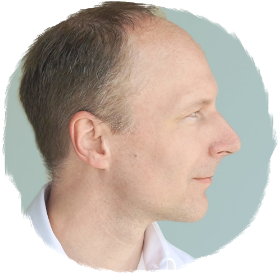Frank Smith starts his book „Understanding Reading” with two highly contrary quotes from two professors at university schools of education, experts in the field, with access to the same professional literature and with the same professional concerns. I quote abridged:
Reviewer 1: „Frank Smith’s research is a straightforward, compelling presentation of approaches to reading and writing that are meaningful and salient to children.”
Reviewer 2: „Either the author is not familiar with the current research literature, or he deliberately avoids citing evidence that is contrary to his point of view. This book is a recipe for disaster.”
Hear, hear, reviewer 2. I’ve read about this breed of negative passion before. But it was not about education, politics, financial interests, or people passionately sabotaging each other on the grounds of, because they believe in, two dissimilar invisible, inorganic, mute deities. It was in a flyer about the dangers of dairy, which someone passed to me in elementary school. I was around 10 years old. I shelved the text, not knowing what to make of it. Why the strong language? Took me two decades to find out what it meant.
The first time I’ve become aware of the impact of this harsh, hostile type of criticism, opposition really, was in a book called „Atemheilkunst”, by Dr. Johannes Schmitt. I found it when I was 14 years old, or 16; The year was 1988, something like that. I realised that there’s a deep chasm in society. Always has been. How can anyone not have been aware of it all the way into his early teens? I really did grow up in the forests on a mountain.
Dr. Schmitt’s „Atemheilkunst” was the only serious book on the science of breathing I could find. A heavy brick of a compendium, encompassing 656 pages, published in 1959. The book presented the then state-of-the-art medical research about the mechanics of breathing, as well as the effects on posture, performance, hormonal balance, emotional health, and how various breathing techniques can be used to
- Manage and even reverse severe scoliosis and deformities of the spine and chest,
- Improve performance in sports and fine arts.
There was one chapter dedicated to research in schools, and how prolonged, slouched sitting severely handicaps breathing and posture, and thus causes lasting physical harm to children. It had several chapters on the history of breathing practises in various cultures, and religion. Certainly one of the top most interesting and eye-opening books I’ve read as a teenager.
Dr. Johannes Schmitt didn’t have it easy. During the Third Reich Dr. Schmitt became victim of an attempted assassination; in 1934 he was arrested and expropriated of his clinic in Munich, Germany. From 1941 onwards he was imprisoned in the concentration camp Sachsenhausen for several years. After the end of the war, Schmitt won his clinic back against the resistance of the provisional city administration of Munich. As head of the clinic, he further developed his breathing massage, breathing gymnastics, and in his breathing therapy. Ultimately, he ran his clinic with great success until his passing in 1963.
Dr. Schmitt received a lot of negativity and opposition during the making of his book. In the previous century the contrary views and ideas on „how to breath correctly” and „how to teach breathing” and „what can and cannot be achieved with breathing” spurred heated, hostile discussions amongst professionals and laymen alike.
I don’t have the physical book around me anymore to quote you the exact details, but recalling from my memory Dr. Schmitt testified in his foreword: he had almost finished writing his book, when his apartment burnt down; the fire destroyed the script. If something severe like that would have happened to me, I guess I would have called it the end-of-an-area and moved on to another profession; plus, for a change of air, relocated to another country. Probably would have started wearing a Groucho Marx-like moustache and cargo pants – just to make myself laugh more often. Dr. Schmitt, however, who survived imprisonment by the Nazis, started again from scratch. He wrote the whole book again. 656 pages on the science of breathing. And finally got it published in 1959.
Doesn’t this blow your mind, too? Believe it or not, in the past people got that passionate on the topic of „breathing”. I’m not even talking about religion or politics. Or maybe, „breathing” IS religion and politics.
Nowadays, when I look at the millions and millions and millions of views neuroscientist Dr. Andrew Huberman gets on Youtube on his speeches about breathing and its influence on mood and hormones, or if I think about the teachings of iceman Wim Hoff in this regard, I assume „breathing” still is a very hot topic.
But actually, what I’m on about in today’s blog post is not the topic of breathing, but the chasm in society. The passionate, open aggression towards other people and their viewpoints, and the defence of oneself, and one’s own viewpoints, with no inclination towards reconciliation. Over some topic. It is not limited to or safely contained in „a few uneducated savages fighting over their totems”, as one might hope. Aggression might errupt over any topic that is dear to anyone’s heart. This behaviour is woven into the human soul, just like a jolly old fungal organism is woven into the forest soil.
Tomorrow I’ll find something better.

